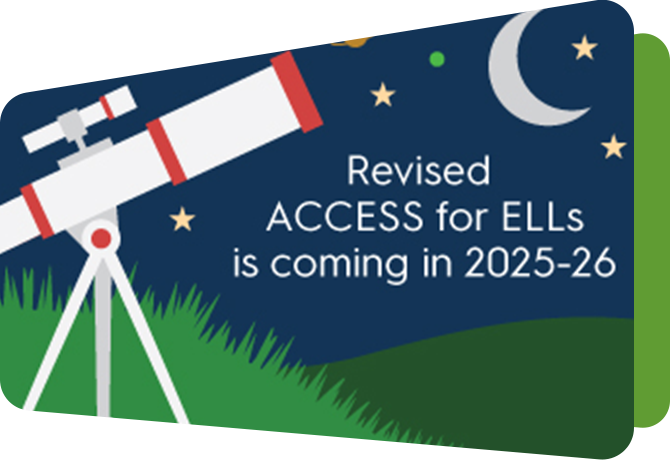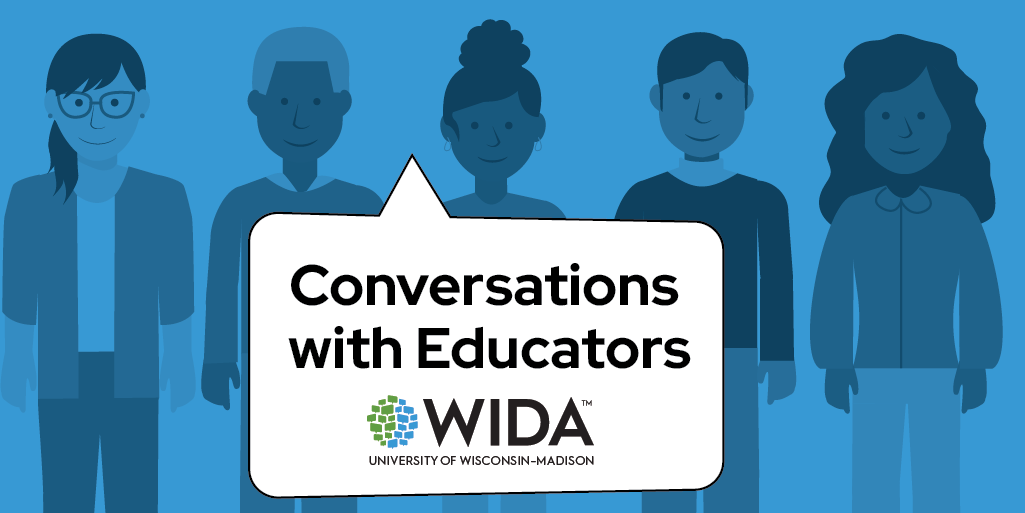Distance Learning Tips for Multilingual Learners with Disabilities Who Use Augmentative and Alternative Communication

With many schools closing their doors due to stay-at-home orders amidst the COVID-19 pandemic, educators are continuing to address how to best support their students from a distance. For multilingual learners with disabilities who are non or minimally verbal, this presents a unique challenge as these students have both language-related and disability-related needs, all while learning academic content. With the transition to distance learning, families may also be struggling to find ways to better support their children during this time.
Anne Page, a speech language pathologist for the Roosevelt School District in Arizona, and creator of Beautiful Speech Life, views this as an opportunity for students to make greater gains — by promoting multiple ways to communicate with families and school team members to support a child’s learning.
“One of the great silver linings is that I am seeing teams make closer connections with families, specifically in terms of Augmentative and Alternative Communication (AAC) for our complex communicators,” Page said. “Before, say we were in an individualized education plan (IEP) meeting and talking about all of the goals. I might get five minutes to talk to them about AAC and how they can support that at home. Now, we have more time to talk about that and what a student is learning at home.”
Beautiful Speech Life is a consulting company that empowers speech pathologists in their quest to help all students, including those students with the most complex communication needs. During COVID-19, Page is thinking about how to best support families: “Parents already have so many demands right now during this time when they are trying to homeschool. I want to make it super easy, and parents can realize ‘Oh, I can do that.’”
Page’s belief that all students deserve access to communication, including multilingual learners with significant cognitive disabilities, radiates through her work as a speech pathologist. One of Page’s students, an English learner whose family primarily speaks Spanish, is a true success story. Before COVID-19 hit, Page was in the process of acquiring an AAC device for this student. At school, Page worked with a translator; however, since the start of the pandemic, Page has been assisted by a friend, who is also a speech language pathologist, with the translation of text messages directed to the student’s mother.
“I would reach out to her and text her what I would want to say. She would translate the text in Spanish, and then I would text it to the mom. We were able to set up a meeting because she didn’t know how to set up the device. It’s a really roundabout way to do it, but it worked… Finally, I did a split screen recording with [the bilingual speech language pathologist], and we were able to give her instructions on how to use the device.”
Previously, this student had struggled in school. Page added: “He was in a classroom for kids with the most severe cognitive impairments. As he got older, we thought maybe he was placed in the wrong classroom, and we moved him to a functional skills classroom.” She mentioned that this child had sensory needs that were not being met and impacted his ability to learn.
“After moving to a new classroom, he had a wonderful teacher who successfully helped manage his sensory needs,” Page said. “Once that was managed, he was able to attend and learn. Then we introduced an AAC device, it was amazing! He knows hundreds of words and was able to label everything in his environment immediately. One of the best stories of a kid I’ve ever worked with. We found out he had so many skills that we didn’t know before, and he knew so many words!”
Page’s work is a true reflection of giving students what they need to show what they know. As Page stated, “It’s a lot of work, but it can be done!”
Distance Learning Tips for Using AAC*
Page provides the following best practices for educators, families and therapists around AAC during the COVID-19 pandemic:
- Model. Modeling is using AAC with a child who uses that same method of communication. Page emphasizes that “this is super important because they are seeing you use what you want them to use. When we teach a typically developing child, they learn by listening to us and us saying things thousands of times before they actually say it.” Modeling is an important and quality way to teach AAC during COVID-19, as well as after.
- Demonstrate, do not demand. It is important to demonstrate use of an AAC device and point to words, but not to demand or continually ask a child to “point to this, point to this word.” Page stresses the importance of attaching meaning to what you are talking about and pointing to, and not expecting the child to understand right away. Instead, demonstrating offers the opportunity to take in the words and build receptive language skills.
- Focus on core vocabulary. Core vocabulary words are frequently used words that build most of our vocabulary (e.g., in, on, my, you). These words are helpful to have on the primary page of an AAC device. Page notes that “what is so helpful about focusing on these words is that these words can apply to a child across all different environments and allow students to generalize words and be able to use them in multiple contexts.”
- Use what you have. Page states that “during this time of COVID-19, there are simple ways that AAC can be implemented and promoted. For example, if you are a teacher, you could read a book with a child who uses an AAC and have them tell you when to ‘turn the page’ so they can be active in listening and using their device during an activity.”
- Talk about things that children like. It is important to engage in conversation about topics that children enjoy and are of interest to them. Page states that “this will motivate a child to engage in communication and through their device and complete activities that are truly interesting to them.”
- Read. There are many non-traditional ways to read to a child. Page recommends digital reading (e.g., child and teacher reading a digital book together over video conferencing) or picture books as two alternative ways that literacy can be promoted when using an AAC device. Parents may want to consider shared reading, which is a great way to build engagement for students with short attention spans. Shared reading involves an emphasis on interaction and making predictions (e.g., "he's standing on the edge of the pond. What might happen next?"). She recommends Tar Heel Reader as a free, accessible resource for shared reading.
You can visit Anne Page at Beautiful Speech Life. You can also find Anne on YouTube, Instagram, Facebook and Pinterest where she has more resources for educators and families. Page recently created AAC at Home, which contains resources and support for getting started with AAC and teletherapy for speech language pathologists and families.
*WIDA does not advocate for or endorse any of these technologies for instruction. Schools, districts and states are responsible for making choices about appropriate and applicable technologies and products.
About the Authors
James D. Mitchell is an inclusion researcher at WIDA and currently works on the Advancing Alternate English Language Learning Assessment (ALTELLA) project. His research focuses on English learners with significant cognitive disabilities and alternate English language proficiency assessment.
Desiree Taylor is a project assistant for the Advancing Alternate English Language Learning Assessment (ALTELLA) project at WIDA. She assists in the research work focused on English learners with significant cognitive disabilities and alternate English language proficiency assessment. Desiree is a current graduate student and future doctoral candidate in the Occupational Therapy Program at the University of Wisconsin-Madison.





